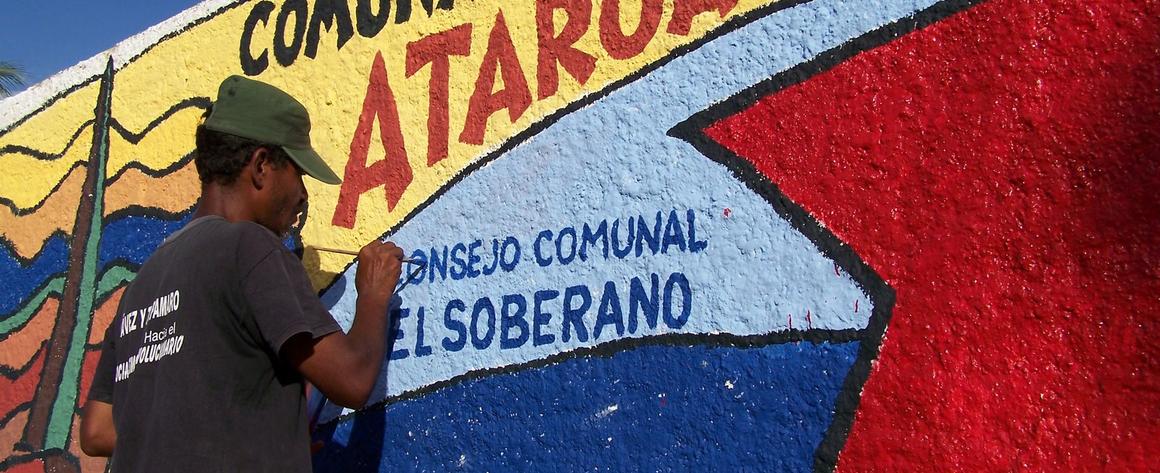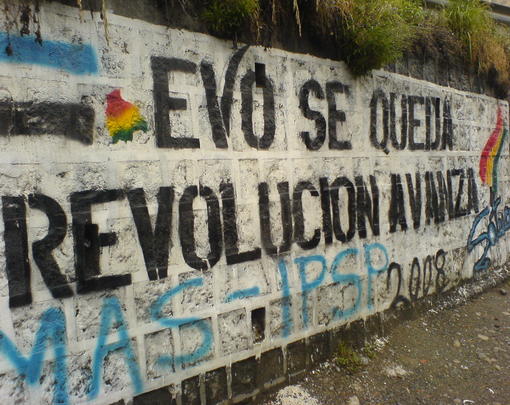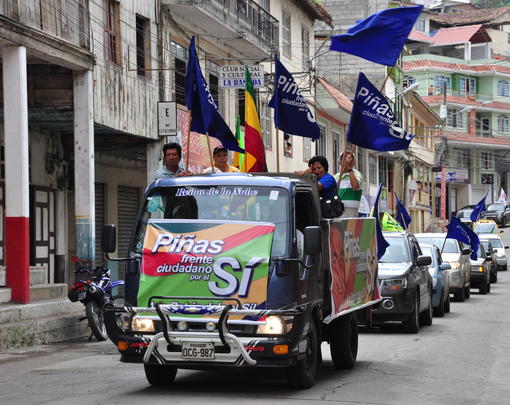Innovative Policies, Social Inclusion and Institutional Weakness
Hugo Chávez’ election as Venezuela’s president in 1998 as a political outsider with 56 percent of the vote attests largely to his appeal among those excluded from the nation’s political, economic and cultural life. Most of these so-called “marginalized” Venezuelans work in the informal economy, while others belong to the rural work force. Their important political role is significant because it helped shaped the social programs that the Chávez government implemented, particularly their innovative and experimental aspects.
Marginalized groups everywhere traditionally refrain from voting.1 Most who work outside the formal economy lack the organizational experience, self-confidence and discipline of the middle and working classes. The latter, for instance, belong to labor unions and thus attend meetings regularly and participate in strikes, activities requiring discipline and organizational skills. In Venezuela, convincing members of marginalized groups to go to the polls, promoting their participation in other arenas and retaining their active support over time represented major challenges for the Chavista government, coupled with overcoming skepticism and apathy. Its response was to implement social programs flexibly and avoid hard-and-fast rules.2
Defining the nation’s political system as a “participatory democracy” in the 1999 constitution, the Chavez government’s social policies promoted broad participation, incorporation and empowerment. All three benefited the population’s popular or non-elite segments, but were especially intended to help the marginalized sectors. Participation was the least class based while incorporation and empowerment meant more to marginalized people than to groups already incorporated and empowered.
Eduardo Silva and Federico Rossi, in Reshaping the Political Arena in Latin America, compare the incorporation strategies of twenty-first century “pink tide” governments with those of the newly created Latin American democracies in the first half of the twentieth century. While the latter incorporated the working class into the political and cultural life of the nation, the former have attempted to incorporate excluded and marginalized sectors.3
An evaluation of the Chavista governments’ attempts to achieve incorporation yields mixed results. Along these lines, it is useful to examine valid criticisms formulated by both members of the opposition and some government supporters since neither the exaggerations of success nor the sweeping condemnations voiced by opposition parties in Venezuela tell us what has happened and why. Only an impartial examination can provide lessons that might both influence social policy going forward in Venezuela and shed light on what is happening or could happen in other pink-tide states or beyond. Indeed, incorporation of the excluded and semi-excluded takes on a special significance amid globalization, which has everywhere given rise to alternative structures partly or completely outside of the formal economy and to opportunities for livelihood that aren’t legally recognized.4
The Rule of Flexibility
Flexibility is important in the implementation of social programs designed for marginalized sectors—and not just in developing countries. The excluded and semi-excluded also constitute an important bloc of the developed-world population. In the United States, workers from racial and ethnic minorities are typically the “last hired and first fired,” as are immigrant workers. Some of those who feel excluded participate in such mass protests as the Occupy Movement and Black Lives Matter Movement.
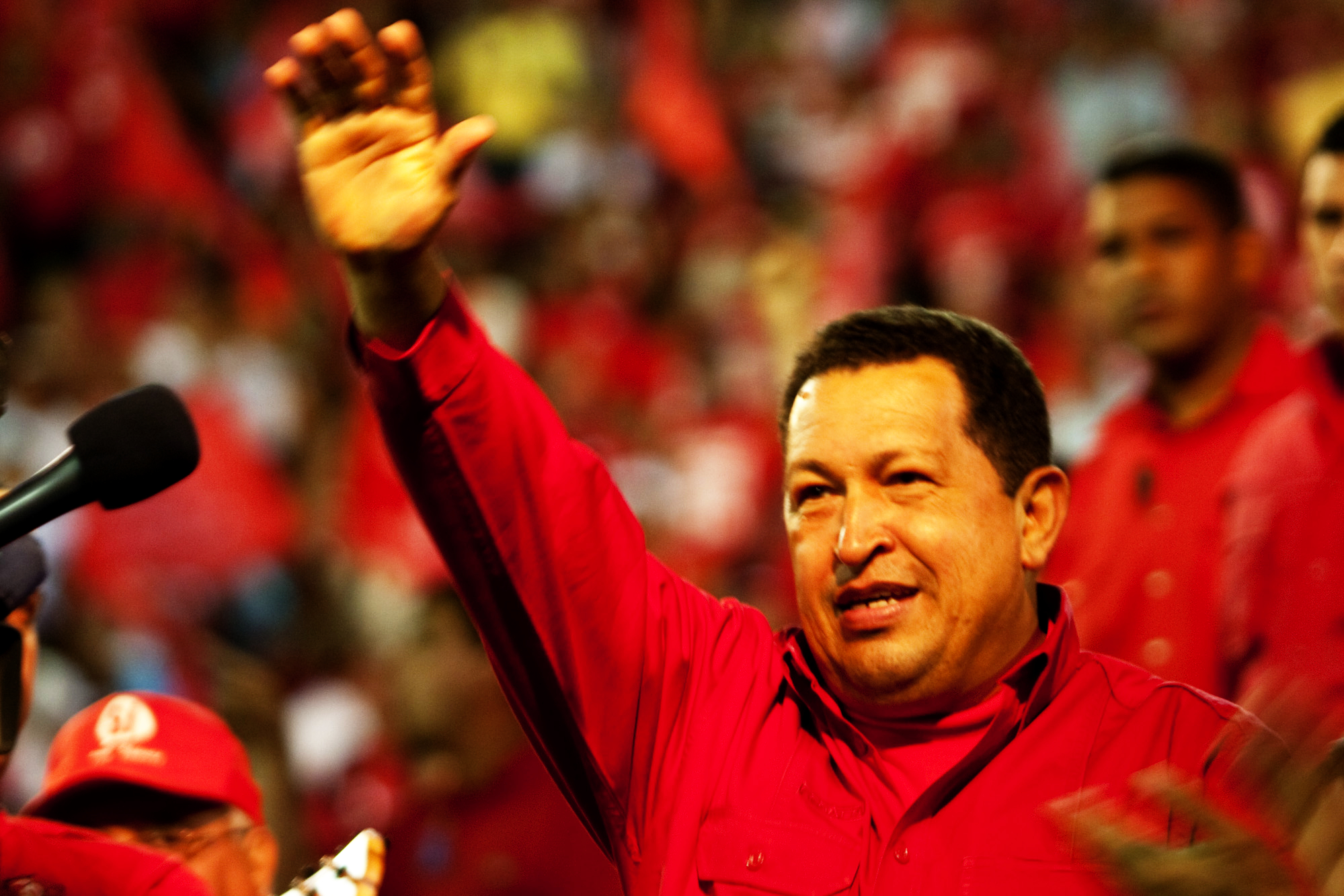
In Venezuela, many of the numerous innovative programs put into practice in nearly two decades of Chavista rule have been informed by the government’s commitment to flexibility. But in practice, the record is decidedly mixed. On the one hand, the policy of flexibility did encourage participation. On the other, in some cases it encouraged paternalistic and clientelistic relationships that led to the squandering of resources since recipients of public funding have few incentives to fulfill their end of the bargain – such as in the case of allocations to create micro-companies. The flexibility policy also often impeded the institutionalization of social programs, which were largely makeshift and outside of existing executive branch structures.
The following government programs and initiatives in Venezuela were especially meaningful for the marginalized bloc of the population due to their flexible implementation.
The Communal Councils
The Communal Council Law passed in April 2006 helped jumpstart the creation of communal councils throughout Venezuela. Representatives of the Ministry of Social Development and Popular Participation (which in 2009 became the Ministry of the Communes) sent social workers (“promotores”) to communities to encourage them to organize communal councils. These designated promoters told community members that about 60,000 U.S. dollars (in bolívares) would be allotted to each community for infrastructural and social projects, but that the money had to be channeled through communal councils. This procedural tactic generated enthusiasm and momentum for the creation of communal councils, which proliferated throughout the nation. By early 2007, about 20,000 communal councils had been formed.5
Councils are intended to be anything but hierarchical. Those in charge of the communal council’s daily decision making are called voceros (“spokespeople”). Equal in rank, all perform their duties free of charge and belong to just one of various communal council commissions— including an electoral commission, a “social controllership” that monitors spending, and an employment commission that enlists and seeks hiring preferences for qualified community members. All decisions are ratified in an “assembly of citizens,” which represents the communal council’s “maximum instance of decision-making” (Article 6 of the 2006 law).
Lengthy funding procedures for the communal councils are designed to prevent the squandering of money—a problem in many of the worker cooperatives that the Chavista government promoted before 2006 (see below). The state generally allocates money to the councils in two payments or more and inspects the results at each stage, taking photographs midway through the job. Besides providing advice, the promotores employed by the governorship or the Fundacomunal office of the Ministry of the Communes inspect work on the project to confirm (using “social” criteria) that it benefits the anticipated number of families. Other ministries carry out inspections of a technical nature. Passing these inspections qualifies the council for additional funding to complete the project or begin work on a new one. Fundacomunal and the Consejo Federal del Gobierno (which receives a fixed percentage of the national budget known as the situado to finance state, municipal and communal council-sponsored projects) both keep registries of communal councils that the governorship and other state offices can check in order to avoid funding councils in bad standing.
Does this system of checks and controls work? The threat of suspension of public funding weighs heavily on voceros and other community members who have invested considerable time and effort in the council’s formation. These procedures, however, have not proven to be totally effective in part because there has been no effort to proceed judicially against those guilty of unethical practices.6
The Organic Communal Council Law of 2009, which replaced the 2006 law, restructured the councils to enhance collective decision making. From the program’s outset, the officials elected to the communal councils were called voceros because of the absence of maximum leadership roles (unlike the cooperatives, each of which was headed by a president). But before the 2009 law, one vocero was often considered communal council “president” by virtue of his or her control of the council’s financial body—the Communal Bank.
One problem was that the Communal Bank, a cooperative by law, was relatively autonomous. For that reason, the 2009 law eliminated the Communal Bank and channeled funds to the councils through regular banks. As an extra safeguard, a team of three voceros from different communal council commissions now has to sign community project requests for itemized expenses, whether it be for material or labor. The request along with the required documentation is then taken to the state body that finances the project, which in turn instructs the Bicentenario Bank (created by the government in 2009 to favor those Venezuelans traditionally refused credit) to issue the check. Leandro Rodríguez, an adviser for the National Assembly’s Committee on Citizen Participation, called the new procedure “time-consuming and at times complicated, but 100 percent necessary”. The 2009 law (in Article 57) also paved the way for the participation of the National Controllership in order to ensure transparency.7
In the name of maximizing participation, the 2006 law established relatively small geographical boundaries for the communal councils. Each represents only 200 to 400 families. The notion of the “smaller the better” actually has deep roots: in the 1980s and 1990s, the Presidential Commission for State Reform (COPRE) facilitated the breakup of dozens of municipalities in order to promote decentralization.8 9
The government’s strategy of allocating resources and distributing goods through the communal councils encourages participation. One indication is the relatively high attendance over the years at the communal council “citizen assemblies,” which are open to all community residents. These meetings choose priority public works projects for which the council then solicits public funding. The assemblies also select the recipients of different housing programs on the basis of personal need. Finally, the assemblies are where community members learn such details as the delivery dates and cost of food items sold at reduced prices through the Ministerio de Alimentación programs to alleviate food shortages.
Many state civil servants in Venezuela believe, as did President Chávez, that allocating money directly to the communal councils to carry out public works projects is better than contracting with construction companies. According to this line of thinking, the communal council can monitor projects to ensure high quality most effectively when it controls the resources and makes important decisions. To that point, staff in state funding bodies add that organized criminal groups posing as labor unions often strong-arm construction firms to hire their own members, who end up receiving salaries without having to work—not a problem in public works run and staffed by community residents.
More generally, councils insist that all but the most specialized jobs be filled by community residents, whether public works projects in the neighborhood are carried out by construction firms, communal councils or the state. As the voceros point out, numerous unemployed or semi-employed skilled workers, including plumbers, electricians and masons, reside in even the poorest barrios.10 By the same token, councils insist that the state provide them with the construction plans for public works in their community so they can monitor projects, an activity referred to as “social controllership” (contraloría social).
Periodically, the Chavista governments attempted to revitalize social programs and overcome lethargy by providing new benefits and introducing innovations under the slogan reimpulso (“new push forward”). Renovating the communal councils and diversifying their functions served these ends.
One example of “reimpulso” marked President Chávez’ third term in office. Starting in 2006, Chavez promoted the creation of “social production companies” (empresas de producción social - EPSs) under the jurisdiction of the communal councils. EPSs were formed in construction, gas distribution, public transportation and the manufacturing of cement blocks, among other sectors. During the same period, the federal government encouraged clusters of councils to form “communes” expressly to carry out large-scale projects. The Law of the Communes of 2010 facilitated this process through the “Plans of Communal Development,” whereby state planning bodies and the EPSs interface with the communes in order to allow them to become financially self-sufficient.11
With the launch of the “Great Housing Mission” in 2011, the communal councils’ mandate was expanded. As before, they picked some of the beneficiaries of new houses and renovation materials by giving priority to the elderly, pregnant single women, disaster victims, and the disabled. When the Maduro government began to emphasize the goal of “food sovereignty” in 2015, the communal councils assumed new roles. Not only did the government prioritize those communal councils with agriculture-based EPSs, but councils throughout the country participated in the state-sponsored house-to-house food distribution program.
Through policy and law, Maduro’s administration also gave the councils a role in enforcing price regulation of basic commodities. Communal council voceros began to accompany the consumer protection agency (the Super-Intendancy of Just Prices, or SUNDDE, which in 2014 replaced INDEPABIS) when it inspected commercial establishments to monitor prices— and to close down for 24 or 48 hours any stores that overcharge.
In short, the constantly expanding roles of the communal councils bolster their image and generate enthusiasm among the people they represent. In the process the councils have established a working relation with diverse bodies at the neighborhood level. As one scholar wrote, “Perhaps the most interesting innovation of the communal councils is that they are designed to integrate the wide variety of committees that have formed in communities over the course of the Chávez presidency.12
Worker Cooperatives
Another government-promoted program with social objectives in the Chavez years was the worker cooperative movement. After the movement received a massive injection of state credit between 2004 and 2006, official attention and priorities shifted to the community councils. The cooperative movement took in large numbers of poor people with little experience in the formal economy. By joining cooperatives, they learned administrative skills and were exposed to new attitudes toward cooperation and solidarity. Breaking with the tradition of wage labor, the experience of profit-sharing also inevitably influenced the thinking of cooperative members. The new way of thinking and acting was reinforced by legislation requiring cooperatives to undertake work in the communities where they are located, such as maintenance service in schools and the distribution of Christmas presents to children. In an additional break with the past, government spokesmen have credited cooperatives, such as those of fishermen, with challenging the market control of monopoly companies.13
Beginning in 2005, Chávez traveled throughout Venezuela to formally authorize loans for cooperatives. In televised “Regional Cabinet Meetings,” recipients of funding discussed their plans and answered questions posed by the president. At the same time, the government established the “Vuelvan Caras” program to provide training sessions of 6 to 24 months to build the skills of those interested in forming cooperatives. Many who took up the offer were graduates of the government’s makeshift high school and university educational programs known as the Robinson and Sucre Missions (see below).
Besides training, government provides contracts, loans and tax exempt status to incentivize coop formation. For instance, numerous large cooperatives now perform maintenance work for local government and for such state companies as the oil industry. That said, many cooperatives are basically private companies that disguise themselves as cooperatives to take advantage of these benefits.14
The availability of these opportunities notwithstanding, few authentic cooperatives are big enough to handle large government contracts. Most boast little more than five members, the minimum number established by law. Many consist of members of an extended family—which, whatever else, guarantees mutual trust among associates.
One of the few large cooperative enterprises, and perhaps the most publicized one, is the complex “Fabricio Ojeda” located in western Caracas on land ceded by the state oil company, PDVSA. Soon after its founding in 2004, the complex had 150 workers (all but one of them women) in the textile factory “Venezuela Advances” and 75 in a shoe factory. The complex’s health and educational facilities serve the residents in the surrounding communities. As for how this enterprise works in house, one supervisor asked about high worker absenteeism in “Venezuela Advances” stated: “If the worker has a legitimate health problem, they can get time off and will receive the same salary as everyone else. But at the end of the year our cooperative’s ‘surplus’ [profits] are divided up and distributed to each worker on the basis of the number of days worked”. For perspective here, in the previous year, the surplus that workers received in December nearly equaled their annual salary.15
For several reasons, many of the initial cooperatives foundered. By 2007 some 48,000 functioning cooperatives remained out of the 140,000 registered the year before.16 While many cooperatives never got off the ground,17 in other cases the cooperative’s president pocketed state loans or down payments for contracts.18
To turn the situation around, the Ministry of the Popular Economy sought greater control over the surviving cooperatives. From 2007 on, cooperatives were required every three months to gain approval for a Certificate of Fulfillment of Responsibilities issued by the Ministry. The paperwork, which included a balance sheet signed by a certified accountant, proved to be time-consuming. Cooperatives also had to demonstrate that they met their financial obligations to government agencies, including the social security system, the housing authority and the national job-training institute INCE. Often, cooperatives asked each member to handle one or two of the required documents so no individual would get too bogged down.
The new requirements were a well-intentioned effort to clamp down on abuse and lack of commitment, which resulted in the waste of public resources. But many cooperative members and social activists criticized the government for careening from one extreme to another, from excessive leniency to onerous requirements.19
The Mission Programs
In 2003, the government created the “Mission” program, partly outside ministerial and legal structures. First came programs in health and education and then, in 2011, housing construction. The Barrio Adentro mission, staffed largely by Cuban doctors, provides free medical service, including dental care and medicines, some from Cuba. Barrio Adentro got its start when Cuban doctors came to Venezuela after heavy flooding in December 1999 that particularly devastated the coastal state of Vargas. The program’s origin in crisis exemplifies the reactive nature of the missions more generally and also underscores the need for flexibility. After the deluge, some 12,000 Cuban doctors, some veterans of the 1999 flood, initiated the Barrio Adentro Mission by establishing residences and consultation offices throughout Venezuela’s poor neighborhoods.
The educational mission programs range from literacy classes (Mission Robinson) to high school education (Mission Ribas, which is largely funded by PDVSA) and university education (Mission Sucre). Some students in these programs receive a modest stipend tantamount to a scholarship. The Robinson and Ribas Missions use video cassettes (mainly produced in Cuba) and “facilitators” in lieu of teachers. Mission Robinson II, started later, enables literacy program graduates to enroll in primary school.
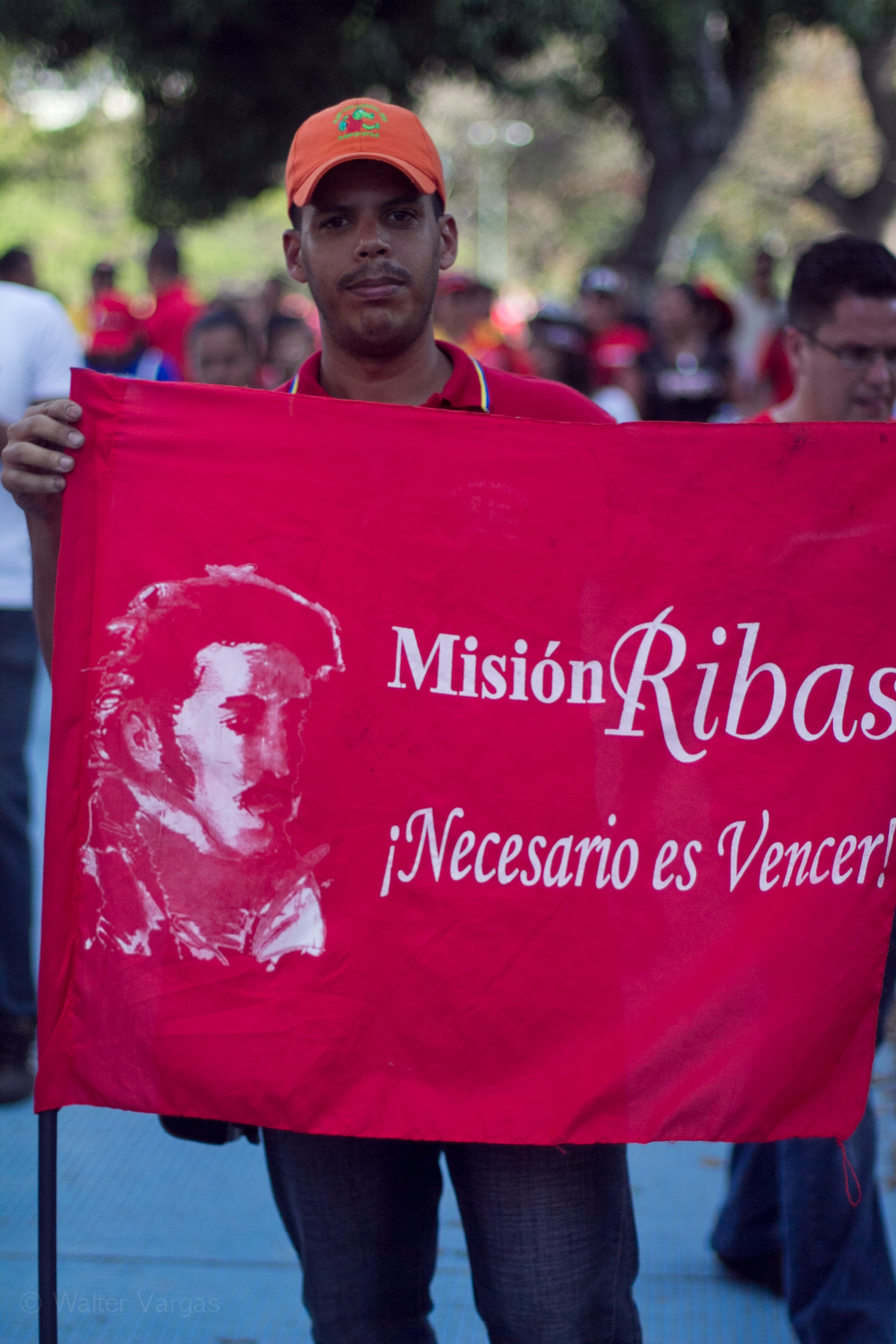
Like other missions, all are community oriented. Nearly every semester, for instance, “Sucre Mission” students in the social sciences take “Projects” courses in which they work with community councils to design proposals that are sometimes submitted to state financing bodies.
The education missions operate on a shoestring budget. Implementing them, the government privileges quantity over quality so per student expenditures are dwarfed by those of the established educational system. Using video cassettes and “facilitators” in place of teachers reduces costs, but also quality. Furthermore, the Ribas and Sucre Missions lack the organizational infrastructure of traditional public schools. Except where campuses have been built, the education missions hold classes in public schools at night and at military bases, with minimum clerical assistance.20
Given lowered standards in the mission schools, students in these programs run the risk that their degrees won’t be recognized. (By the same token, the community medical program “Medicina Integral Comunitaria” is suffused with politically driven resentment against the Cuban doctors who serve as teachers.) Since the danger of worthless degrees would undoubtedly grow were the political opposition to return to power, the government has reached admissions agreements with public universities under the jurisdiction of the Ministry of Higher Education. Under this arrangement, which the autonomous universities have rejected, public universities supervise exams and theses and issue diplomas in their names without reference to the Sucre Mission.
The prospect of a university degree in the name of an established university has drawn hundreds of thousands of underprivileged young people into the Sucre Mission program, but it is also controversial. Many in the opposition argue that granting mission students what North Americans call a community college degree (known in Venezuela as “técnico superior”) instead of a university degree would be more appropriate. This proposal would undoubtedly make the program less attractive and sharply reduce enrollment. The granting of a regular university degree to the graduates is a calculated decision that takes into consideration the importance of the incorporation of the formerly excluded sectors of the population, and especially young people.
Two features of the mission programs reinforce the strategies discussed above with regard to the community councils and other government social policies. First, since the programs were makeshift and experimental in some ways, and were often run out of parallel structures (such as in the case of the educational missions, which were largely outside of the grip of the Education Ministry), bureaucratic requirements were less onerous. This made them more attractive to excluded and semi-excluded groups. Second, various missions have gradually gone beyond their original objectives. Some have entered new stages. Barrio Adentro, for instance, first added specialized medical attention, then opened diagnostic centers, and after that branched out into specialized hospitals. These advances and the reformulation of objectives reflect the Chavista strategy of continually deepening the “revolutionary process” by introducing new programs, slogans and goals. They also reinforce reimpulso by renewing participants’ enthusiasm.
Input from Below
Various programs implemented by Chávez evolved out of proposals from the rank and file of the Chavista movement or sprang from grassroots experiences. For instance, the community councils partly grew out of the Water Committees (Mesas Técnicas de Agua) that emerged from 1993 to 1996 in barrios throughout Caracas during the mayoral rule of future Chavista leader and vice-president Aristóbulo Istúriz. The mesas worked closely with the mayor’s office to improve the water supply to barrio households. As another example, the communes actually emerged as a result of local initiatives prior to the Law of the Communes passed in 2010, as documented by social scientists George Ciccariello-Maher and Dario Azzellini.21
Another proposal that emerged from the Chavista movement’s ranks led to the formation of the Comités Locales de Abastecimientos y Producción (Local Supply and Production Committees – CLAPs), which deliver basic food items house to house at subsidized prices. The idea came out of the attempt by Chavistas to analyze the causes of their sweeping defeat in the December 2015 National Assembly elections. The Chavistas attributed the disappointing outcome to scarcity of basic commodities and the deficient system of food distribution. Members of the Chavista party, the United Socialist Party (PSUV), and its allies were placed in charge of the CLAPs.
Was this step in keeping with the principles of inclusion and participation? Government supporters justified the move on grounds that CLAPs are basically adjuncts of the state. In addition, politically, the CLAPs’ function was to combat the alleged “economic war” waged by the government’s enemies in the private sector so the Chavistas were loath to trust them to run the committees, particularly because large sums of money were involved. Nevertheless, the distinction between the CLAPs as an arm of the state and as a social movement was blurred, especially since in many communities some of the organizations’ participants belonged to the opposition and thus did not consider themselves to be government representatives.22
Criticisms and Lessons
One thorny issue is the Chavista government’s reluctance to take punitive measures against wrong doers, particularly in low-income groups. As Congressional advisor Leandro Rodríguez points out, community activists who accuse fellow communal council members of misspending money often complain of lengthy delays in court procedures, which entail a freeze on additional funding for the council. Beyond that is a lack of formal links between the community council’s “social controllership” commission and the National Controller, who according to law should be providing the communities with legal information. All that said, state agencies have implemented thorough inspection procedures and mechanisms to avoid granting funds to community councils that haven’t satisfactorily completed previous projects.23
In general, the nation’s sharp political polarization holds back the institutionalization of the Chavistas’ social programs and other initiatives. Intense ongoing political confrontation pressures the Chavista government to avoid strengthening institutions by establishing institutional rules, regulations and constraints, which may cut into its social base of support.
The second prong of the government’s social strategy, the massive incorporation of low-income Venezuelans in diverse programs, in some cases represents a zero-sum game favoring some groups at the expense of others. In the case of the Sucre Mission, for instance, the “losers” are graduates of the traditional universities who must compete in job markets swamped with mission graduates who drive salaries down even though their diplomas may have been easier to obtain. Similarly, from a purely cost-benefit perspective, allocating money directly to the communal councils poses a dilemma. The performance of private contractors with their experience and technology is typically superior, but the experience obtained by the councils advances the goal of popular participation.
Popular participation and mobilization embody the concept of majority rule (or “radical democracy”), which underpins the discourse and some of the policies of the Chavista government and bolsters its democratic credentials. Radical democracy in the tradition of Rousseau is often criticized by liberal thinkers for holding back institutional checks and balances while failing to distinguish clearly between “civil society” and the state. Certainly, that happened in the case of Venezuela’s CLAPs.
The Chavista government’s social programs evidence the tensions between institutional checks and radical democracy. As noted here, the flexibility principle guided the government’s social programs aimed at popular incorporation – particularly of the marginalized sectors – in such programs as the cooperative movement and the education missions. In practice, the policy of flexibility worked the best in makeshift structures functioning on the margins of established institutions.24
The system of checks and balances, though associated with liberal democracy, is a sine-qua-non for institutionalizing the Chavista model in a way that avoids the bureaucratic socialism that the Chavistas so adamantly reject. More generally, radical democracy and institutional checks (such as the separation of powers) should not be considered incompatible. Indeed, their reconciliation is essential if social programs are to be run efficiently and honestly and, equally important, if they are to succeed.
- 1In the 1960s and 1970s, Venezuelan elections were characterized by high rates of participation even among the poor due to obligatory voting requirements. This pattern changed in the 1980s and 1990s when electoral participation significantly declined.
- 2Sidney Veba and Norman H. Nie, Participation in America: Political Democracy and Social Equality, 1972 (New York: Harper and Row)
- 3Eduardo Silvia and Federico M. Rossi, Reshaping the Political Arena in Latin America: From Resisting Neoliberalism to the Second Incorporation, 2017 (Pittsburgh: University of Pittsburgh Press)
- 4Roger Burbach, Orlando Nuñez and Boris Kagarlitsky, Globalization and its Discontents: The Rise of Postmodern Socialisms, 1997 (London: Pluto Press)
- 5George Ciccariello-Maher, Building the Commune: Radical Democracy in Venezuela, 2016 (London: Verso), 107 and Gregory Wilpert “Venezuela’s Experiment in Participatory Democracy,” in Thomas Ponniah and Jonathan Eastwood (eds.), The Revolution in Venezuela: Social and Political Change under Chávez, 2011 (Cambridge MA: Harvard University Press), 110
- 6Cristobal Valencia, We are the State! Barrio Activism in Venezuela’s Bolivarian Revolution, 2015 (Tucson: University of Arizona Press), 147-153
- 7Leandro Rodriguez, personal interview, 2011 (Caracas, September 15)
- 8Steve Ellner, “Deepening of Democracy in a Crisis Setting: Political Reforms and Electoral Process in Venezuela.” Journal of Interamerican Studies and World Affairs no.4, (1993-94), 1-42.
- 9Actually, the new municipalities that emerged represented mostly wealthy communities. This was the case with the capital city of Caracas, which was broken up into five municipalities. This development, like other reforms designed to promote decentralization during those years, was inspired by the then prevailing thinking of neoliberalism.
- 10The system in Venezuela in which social organizations make “recommendations” to companies for the hiring of employees dates back in time. The 1973 oil workers contract allowed contractor companies to hire 80 percent of their employees from union-supplied lists, a percentage that was retained in subsequent collective bargaining agreements.
- 11George Ciccariello-Maher, Building the Commune: Radical Democracy in Venezuela, 2016 (London: Verso), 84-99
- 12Gregory Wilpert “Venezuela’s Experiment in Participatory Democracy,” in Thomas Ponniah and Jonathan Eastwood (eds.), The Revolution in Venezuela: Social and Political Change under Chávez, 2011 (Cambridge MA: Harvard University Press), 109-110
- 13Lucena, Héctor, “Sindicatos cooperativas: encuentros y desencuentros,” in Lucena (coordinator), Cooperativas, empresas, estado y sindicatos: una vinculación necesaria, 2007 (Barquisimeto: Universidad Centroccidental Lisandro Alvarado and Universidad de Carobobo), 74-76
- 14Lucena, Héctor, “Sindicatos cooperativas: encuentros y desencuentros,” in Lucena (coordinator), Cooperativas, empresas, estado y sindicatos: una vinculación necesaria, 2007 (Barquisimeto: Universidad Centroccidental Lisandro Alvarado and Universidad de Carobobo), 215-216
- 15Steve Ellner, “The Trial (and Errors) of Hugo Chávez.” In These Times 31, 2007, no. 9 (September): 26
- 16In a work published in 2013, Dario Azzellini stated that the Chávez government had promoted the creation of 70,000 “operative cooperatives” (“Economía solidaria en Venezuela: del apoyo al cooperativismo tradicional a la construcción de ciclos comunales.” Revista Idelcoop, no. 210: (2013), 29).
- 17The government’s all-out campaign to promote the formation of cooperatives may have been hasty and premature. It encouraged many Venezuelans to create and register a cooperative even though they lacked a clear idea of the challenges involved, or a long-time commitment to the undertaking. The problem was aggravated by the absence of a tradition of cooperatives in Venezuela (Azzellini, 2013: 22).
- 18Steve Ellner, “The Trial (and Errors) of Hugo Chávez.” In These Times 31, 2007, no. 9 (September): 26
- 19Angel Rodríguez, “Cooperativas de mantenimiento y servicio de Enelbar,” in Lucena (coordinator), Cooperativas, empresas, estado y sindicatos: una vinculación necesaria, 2007, (Barquisimeto: Universidad Centroccidental Lisandro Alvarado and Universidad de Carobobo), 217-249
- 20Kirk A. Hawkins, Venezuela’s Chavismo and Populism in Comparative Perspectives. Cambridge, 2010 (England: Cambridge University Press), 200-205
- 21George Ciccariello-Maher, Building the Commune: Radical Democracy in Venezuela, 2016 (London: Verso) and Dario Azzellini, Communes and Workers’ Control in Venezuela: Building 21st Century Socialism from Below, 2017 (Brill: Leiden and Boston), 245-246
- 22The case of the CLAPS as well as the community councils puts in evidence the ongoing and perhaps inevitable tension between governments favoring far-reaching structural change and social movements, which attempt to assert a degree of autonomy. Since 2014, when the price of oil sharply declined and pressing economic difficulties set in, the political opposition has made inroads in numerous community councils that the Chavistas had originally dominated.
- 23Leandro Rodriguez, personal interview, 2011 (Caracas, September 15), and Margarita Lopez Maya and Luis E. Lander “Participatory Democracy in Venezuela: Origins, Ideas, and Implementation,” in David Smilde and Daniel Hellinger (eds.), Venezuela’s Bolivarian Democracy: Participation, Politics, and Culture under Chávez, 2011 (Durham N.C.: Duke University Press)
- 24see discussion by David Smilde “Introduction: Participation, Politics, and Culture – Emerging Fragments of Venezuela’s Bolivarian Democracy” in Smilde and Daniel Hellinger (eds.), Venezuela’s Bolivarian Democracy: Participation, Politics, and Culture under Chávez, 2011, (Durham N.C.: Duke University Press), 3-18.

